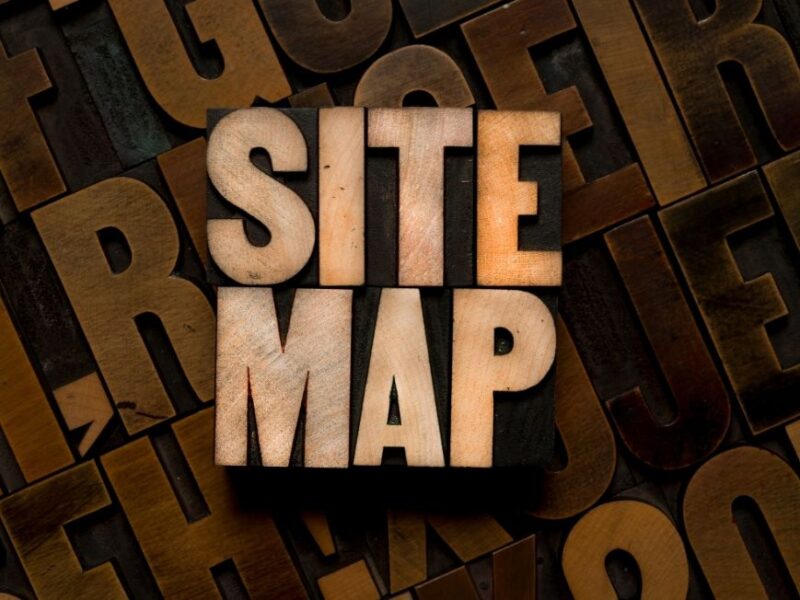On this page you will read detailed information about What Is a Sitemap.
In the ever-evolving digital landscape, you may often find yourself grappling with the intricacies of website optimization. One crucial tool in this endeavor is the sitemap. Serving as a blueprint for your website, a sitemap is an essential element that guides search engines through your site’s structure, ensuring efficient indexing. By understanding the role of sitemaps, you can enhance your website’s visibility and accessibility, ultimately driving more traffic and improving user experience. This article delves into the concept of sitemaps, shedding light on their importance and offering insights into leveraging them for superior website performance.
Understanding the Basics: What is a Sitemap?
Definition and Purpose
A sitemap is a systematic list or model of a website’s content, constructed to help both users and search engines navigate the site more effectively. Think of it as the blueprint of your digital space, offering a bird’s-eye view of the site’s structure. By laying out the hierarchy of pages and subpages, sitemaps facilitate improved website indexing, ensuring that search engines like Google can find and understand your content with ease.
Types of Sitemaps
Sitemaps typically come in two forms: XML and HTML. An XML sitemap is designed primarily for search engines, providing a structured map of the website’s URLs to ensure comprehensive indexing of the site’s pages. On the other hand, an HTML sitemap is user-oriented, offering a clickable list of pages to enhance the user navigation experience. Each type serves a unique purpose, yet both are integral to a robust digital strategy.
Importance in SEO
Incorporating a sitemap is a strategic move that can significantly boost your website’s search engine performance. By facilitating easier access to all pages, a sitemap ensures that even pages deep within your site’s architecture are indexed. This is especially crucial for larger websites with complex structures. Moreover, a well-organized sitemap can enhance the visibility of updates and new content, prompting search engines to crawl and index them swiftly.
Understanding what is a sitemap and its pivotal role in website optimization can vastly enhance your site’s accessibility and user experience, making it an indispensable tool in your digital toolkit. Embracing this element not only aids in improved website indexing but also elevates your site’s overall search engine ranking.
Different Types of Sitemaps: XML, HTML, and More
XML Sitemaps
XML sitemaps are essential for efficient website indexing. They serve as a roadmap, helping search engines navigate and understand your site’s structure. An XML sitemap lists all the URLs of a website, providing metadata about each URL, such as when it was last updated and its significance relative to other pages. This data is invaluable to search engines, as it ensures that all critical pages are crawled and indexed, even if they aren’t well-linked internally. Therefore, for businesses keen on improving their website’s visibility, understanding what is a sitemap and implementing an XML version is indispensable.
HTML Sitemaps
On the other hand, HTML sitemaps are designed with users in mind. They offer a human-readable list of a site’s pages, allowing visitors to quickly find specific content. Unlike XML sitemaps, which primarily serve search engines, HTML sitemaps enhance user experience by providing a structured and organized overview of the website. They can be particularly useful for larger sites with complex architectures, ensuring users don’t get lost and can navigate the site efficiently.
Visual Sitemaps & More
Beyond XML and HTML, there are other types of sitemaps like visual sitemaps, which present the website structure graphically. These can be particularly helpful during the planning stages of a website redesign, offering a clear picture of the current architecture. Additionally, RSS feeds and news sitemaps cater to specific content types, ensuring timely updates to search engines about new additions.
In conclusion, each type of sitemap serves a distinct purpose, whether it’s aiding search engine discovery or improving user navigation. By employing the right combination, you can optimize both user engagement and search engine indexing effectively.
How Sitemaps Enhance Website Indexing and SEO
Streamlining Search Engine Crawling
Sitemaps play a crucial role in enhancing the efficiency of search engine crawling. These digital roadmaps allow search engines to seamlessly navigate your website, providing a clear layout of its structure and content types. By using a sitemap, you ensure that every page, from your homepage to the deepest subpage, is easily discoverable by search engines. This is particularly beneficial for large websites or those with complex architectures, where certain pages might otherwise remain hidden or overlooked.
Ensuring Comprehensive Indexing
One of the most significant advantages of implementing a sitemap is its ability to guarantee comprehensive indexing. When search engines like Google or Bing crawl your sitemap, they receive a direct invitation to index every part of your website. This ensures that all your content, including blogs, product pages, and multimedia elements, is readily available in search engine databases. Sitemaps are especially essential for new websites or those with fresh content, as they serve as a communication tool, informing search engines of new updates or changes.
Enhancing SEO Performance
Incorporating a sitemap on your website can greatly enhance your search engine optimization (SEO) efforts. By facilitating efficient crawling and comprehensive indexing, a sitemap helps improve your site’s visibility on search engine results pages (SERPs). Moreover, sitemaps can include metadata about each URL, such as the last update, change frequency, and page importance, which aid search engines in delivering more relevant and timely results to users. Therefore, understanding what is sitemap and leveraging its benefits can significantly boost your site’s SEO performance.
Overall, a well-constructed sitemap is an invaluable tool for achieving improved website indexing and enhancing your SEO strategy.
Creating an Effective Sitemap for Your Website
Understanding the Basics
Creating an effective sitemap is crucial for enhancing how search engines navigate your website. At its core, a sitemap is a blueprint that guides search engine crawlers through the structure of your site, ensuring that every page is indexed. Crafting a clear and hierarchical sitemap can significantly improve your website’s visibility and accessibility. This, in turn, enhances your SEO efforts, making it easier for search engines to recognize the relevance and value of the content you offer.
Choosing the Right Format
When creating a sitemap, you must decide between an XML or HTML format. XML sitemaps are primarily used by search engines, providing a detailed list of URLs that need indexing. They are structured and systematic, making them easier for crawlers to process. On the other hand, HTML sitemaps are user-oriented, designed to improve navigation for visitors by showing a website’s layout. For optimal results, consider using both formats: XML for search engines and HTML for users, each serving its specific purpose.
Structuring Your Sitemap
To create a coherent sitemap, start by organizing your website’s content. Identify key categories and subcategories that logically group your pages. Ensure that the URLs are clean and descriptive, reflecting the content they point to. Furthermore, prioritize pages by importance, indicating to search engines which pages are pivotal. Regularly update your sitemap to capture new content or remove obsolete URLs, keeping your website structure current and relevant.
Submitting Your Sitemap
Once your sitemap is ready, the next step is to submit it to search engines via tools like Google Search Console. This submission is a direct invitation to search engines to crawl and index your site. Regular monitoring of your submission status and resolving any errors or issues indicated by these tools will help maintain your site’s optimal visibility.
Creating an effective sitemap is not just a technical necessity but a strategic move in ensuring your website stands out in the vast digital landscape. By understanding what a sitemap is and how it functions, you elevate your site’s discoverability and user experience.
In the previous post, we had shared information about Mastering URL Parameters: Enhance Your SEO Strategy, so read that post also.
Common Challenges and Solutions in Sitemap Implementation
Understanding Sitemap Complexity
Implementing a sitemap may initially seem straightforward, yet it often unfolds into a more intricate task. One of the primary challenges involves managing dynamic content. Websites with frequently updated pages or user-generated content pose a significant hurdle. Such content needs to be consistently reflected in the sitemap to ensure comprehensive indexing by search engines. To tackle this, automated tools or CMS plugins can be employed to update sitemaps in real time, ensuring that all new content is accounted for without manual intervention.
Handling Diverse Content Types
Another common challenge arises from diverse content types. Websites today host a variety of content, from videos and images to PDFs and interactive elements. Each of these requires different handling within a sitemap. For instance, image and video sitemaps differ from the standard XML sitemaps and require specific tags. Utilizing specialized sitemap extensions tailored for media content ensures these assets are crawled and indexed properly, enhancing their visibility in search results.
Ensuring Sitemap Accessibility
Accessibility is also a critical component in sitemap implementation. A sitemap must be easily accessible to search engines, which means correctly linking it in the robots.txt file and submitting it through search engine webmaster tools. This step is essential for effective indexing. Moreover, maintaining a clean and error-free sitemap is crucial—errors or broken links within the sitemap can impede search engine crawlers, leading to incomplete indexing. Regular audits and validation checks can identify and rectify such issues, ensuring your sitemap’s integrity.
By understanding and addressing these challenges, you can optimize your sitemap to improve your website’s visibility and indexing efficiency, making it a vital component of your SEO strategy.
Conclusion
In navigating the digital landscape, understanding the intricacies of a sitemap becomes crucial for enhancing your website’s visibility and performance. By embracing this tool, you empower search engines to index your content more efficiently, ensuring that your audience finds you easily. A well-structured sitemap acts as a strategic guide, spotlighting your most valuable content and improving your site’s search engine ranking. As you refine your online presence, integrating a sitemap into your strategy not only optimizes indexing but also strengthens your site’s functionality. Harness the power of sitemaps, and propel your website toward greater discoverability and success.
Disclaimer
The content published on the Marketyra blog is for educational and informational purposes only. While we strive to share accurate and up-to-date digital marketing tips, strategies, and trends, we do not guarantee any specific results. Readers are advised to use their own judgment before applying any tips or advice provided. Marketyra is not liable for any losses, damages, or issues arising from the use of blog content.
So friends, today we talked about What Is a Sitemap, hope you liked our post.
If you liked the information about What Is a Sitemap, then definitely share this article with your friends.
👉 Need help with SEO or digital marketing services?
Feel free to call us at 📞 +919306925861, email us at 📧 admin@marketyra.com to get in touch!







